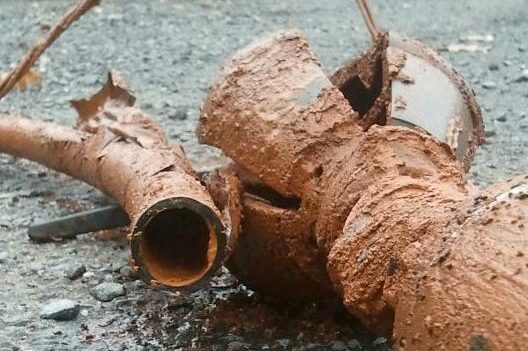Sulfur Eating Bacteria Well Water

Chlorine is toxic to coliforms and is the most common type of water disinfection agent.
Sulfur eating bacteria well water. Many well owners are immediately frightened by the thought of contaminants of any kind entering their water supply. Additional iron bacteria sulfur reducing bacteria information. Like other minerals sulfur can leave stains in plumbing fixtures such as sinks and toilets. Often keeps odors away for 1 2 months.
When coliforms are present the treatment is usually to chlorinate the system. From pollution this is rare. Iron and sulfur bacteria in water. Clothing washed in water that is high in sulfur may also become stained.
Iron and sulfur bacteria are an annoyance more than a health hazard but they can be incredibly damaging to the plumbing systems that they grow in. In some cases the odor will only be. Because objectionable stains tastes or odors may be due to other causes including sulfate hydrogen sulfide or other nuisance organisms like sulfur bacteria proper identification of chemical substances and microorganisms in well water is the first step and should be done by a state certified laboratory. The enzyme dissimilatory bi sulfite reductase dsrab ec 1 8 99 5 that catalyzes the last step of dissimilatory sulfate reduction is the functional gene most used as a molecular marker to detect the presence of sulfate reducing microorganisms.
Shock your well with chlorine bleach or hydrogen peroxide to get temporary relief from sulfur odors. Produced by sulfur bacteria or chemical reactions inside of water heaters. Hydrogen sulfide may also result from wells drilled in shale or water heaters that contain magnesium rods. Bacterial contamination of a water supply doesn t always mean health hazard.
Water that contains as little as one part per million of hydrogen sulfide can tarnish copper and silver. Where does the sulfur come from. Of the two types sulfur reducing bacteria are the more common. Produced by certain sulfur bacteria in the groundwater well or plumbing system.
It is perhaps more common in areas with shale or sandstone geology. As with odors caused by iron bacteria the sulfur smell may only be noticeable when the water hasn t been run for several hours. May help other bacteria grow. Install a chlorine injector system chlorinator on your wellhead for continuous injection of chlorine when the water is running.
The sulfate reducing microorganisms have been treated as a phenotypic group together with the other sulfur reducing bacteria for. You might imagine tiny bacteria eating sulfur and then producing hydrogen sulfide gas as waste. Some types of bacterial contamination are more annoying than harmful. Chlorination eliminates the sulfur bacteria that cause the odor and combined with an air charger self.
Hydrogen sulfide typically enters the well water through naturally occurring bacteria. Sulfur bacteria produce a slime and can help other bacteria grow such as iron bacteria. It s not very comforting knowing that smelly water is the product of bacteria waste. The biggest problem of sulfur in drinking water is that it stinks.
















/what-causes-sulfur-burps-4587735-01-dda6a0c753b044139e79f6bb9cc2cc40.png)





























